

MAKE THE RIGHT IMPRESSION
Table manners are a great equalizer regardless of the status of your meal companions. Once you master them, you will fit in well virtually anywhere in the world. Good table manners are also for everyday, not just special occasions. Even at less formal business meals and social events, however, conducting yourself properly at the table can be a challenge.
Here is some advice for when you first sit down at the table:
- As soon as you sit down, place your napkin on your lap. When there is a host, however, wait for the host to do so first. Use your napkin to discreetly wipe your lips and mouth whenever you think there is food or moisture on them as opposed to licking your lips. Afterwards, return the napkin to your lap.
- Do not tuck the napkin into the neck of your shirt or clothing unless you are eating lobster in your hands. Sometimes in the latter case, you will be given a bib to be tied around your neck.
- Do not use the napkin to wipe any part of your face or neck other than your mouth. Women should also not use a napkin for blotting their lipstick.
- Sit up reasonably straight at the table with your feet placed on the floor in front of you. Avoid slouching at the table. Also, do not put your handbag, purse, cellphone or key chain on the dining table.
- Generally, your hands should remain on your lap or on the edge of the table when you are not eating or drinking. While it is permissible to briefly rest one or two of your elbows on the table when you are waiting for the food and conversing, do not put your elbows on the table when you are eating or holding any utensils or glasses.
- Refrain from playing with your cutlery or anything else on the table while you are waiting to be served food.
- Beverages are usually served to people on their right and food on their left. Plates and other eating dishes are cleared away from the right of a person as are glasses.
At formal luncheons or dinner parties, you will be confronted by a formidable array of cutlery, glasses and plates. This is how everything will usually be arranged:
- Your table napkin will be located in the center of the place setting, to the left of the forks, or on the bread plate to your left.
- At the top right-hand side of your place setting will be one or more glasses, the largest of which will usually be for water. If there are two wineglasses, the largest one is for red wine and the slightly smaller one is for white wine. Champagne is usually served in a flute-shaped glass.
- The cutlery to the left and right side of each place setting is arranged in the order that each piece is to be used course by course, starting on the outside and working in to the center or main plate. See Figure 3 for a typical place setting at a dinner party or upscale restaurant.
- On the left side of your place setting will likely be two or three forks arranged in order of the sequence of the courses you are going to be served before dessert, starting on the far left side. Moving from left to right, the first fork is for the first course unless it is soup, the next fork is for the salad course, and the last fork on the right is for the main course, often meat or fish. The latter is going to be the largest fork which usually pairs with the largest knife to the immediate right of your place setting.
- When you have a salad as your main course, eat it with the largest fork. Similarly, when the salad and the entrée or main dish are served together during the same course, use the same dinner fork for eating both of them. Sometimes, fish and salad forks are both shaped differently than regular forks with slightly wider and curved prongs or “tines” as they are called.
- On the right side will be one to three knives with the blades facing inward. These will again be arranged beside each other in order of the courses, but from right to left. This generally means that the largest knife will be closest to the center of the place setting and the smallest on the far right. Knives to be used with a fish course usually have a somewhat broader blade and are shorter than regular main course knives.
- The bread plate is always located to the left side of your place setting. If it does not already have a small knife on it to use for cutting and buttering your bread, then the smallest knife on the right side of the place setting is the bread knife.
- Sometimes a salad plate is included with the initial place setting. If so, it is placed on the left side of the place setting, either positioned where the bread plate normally goes or just above the bread plate. No cutlery will be placed on the salad plate before you begin using it.
- The largest knife is to be used with the largest fork for the main dish of the meal. If it is a fish dish, the knife for it will have a slightly more curved blade and be different in shape from the other knives. To the right of the knives will be a round-shaped spoon to use with the soup dish if one is being served.
- Sometimes with more formal place settings, a large, fine china or silver “charger plate” will be located in the center of your place setting that either will be removed just prior to the start of the first course or will remain there for the soup, fish or salad courses before being removed prior to the serving of the main course. These courses will then be served in separate plates or dishes placed on top of the charger plate.
Follow these instructions in using cutlery:
- Knives are always used in your right hand with the main part of the handle held in the palm, the thumb pressed against the left side of the top of the handle, and the index finger placed on top of the first part of the blade with the sharp part facing downward. See Figure 4. When you are using the knife to cut or butter something, the knife should always be positioned relatively horizontally to the plate, never with the handle raised up in the air. Knives are also not to be held like a pencil nor clutched in your fist. The exception to this is when you are using your knife to remove bones or skin from a fish, requiring you to adjust how you are holding your knife to do so.
- Forks are for eating either together with a knife or spoon, or by themselves. In the first case, the fork should be positioned facing down in your left hand with the handle held in the palm, the thumb pressed against the right side of the top of the handle, and the index finger pressed against the arch of the points or tines. See Figure 5. Forks should also never be held clenched in the fist of your hand.
- When the fork is used by itself, the fork should be held facing upward in your right hand with the top of the handle positioned between the tip of your third and index fingers, the middle of the handle held by the thumb, and the rest of the handle resting in the back of the V where your forefinger and thumb are joined together. See Figure 6.
- Spoons are always held in your right hand in a similar manner as the fork when used alone. The spoon faces upright, positioned between the third and index fingers, and is held down by the thumb resting on the other side of the handle. When you raise the spoon to your mouth, eat or sip from the left side of the spoon, not the front of it.
- When something other than soup is served for the first course or appetizer, it is usually eaten with the smallest fork on your place setting.
- For the main course, hold the largest fork in your left hand with the points facing downward when you are using it to help cut something. As described earlier, hold the knife in your right hand with the blade facing down and your forefinger resting on top of it. See Figure 7. Cut and eat each piece before you cut another. When you do not need to use a knife, set it down and hold the fork in your right hand with the points facing upward to eat the food.
- With the main course, some Americans use the large fork and knife held in their left and right hands to cut a piece of their meat, fish or other food (in the manner described above). Then, they place the knife diagonally across the upper-right edge of their plate, transfer the fork to their right hand with the points held upward and use it to eat their food one or two mouthfuls at a time. See Figure 8. While either way of handling your fork and knife is acceptable in most parts of the world, I think the first method described is preferable as shown in Figure 7.
- For the salad course, you usually only need to use the salad fork held right-side up in your right hand. If something in your salad needs to be cut and you cannot do it with the fork alone, transfer the fork to your left hand and use the second largest knife held in your right hand to do the cutting.
- At the top and center of the place setting, there may be a medium-sized spoon facing to the left above a similar sized fork facing to the right. These are to be used together for eating the dessert dish. The spoon is to be held in your right hand and the fork in your left hand with the tines facing downward. See Figure 9. Eat off the left side of the spoon, using the fork to help you push the dessert on to the spoon. When you have finished dessert, place the fork and spoon together side-by-side in the six-thirty position facing to the top of the plate. If the dessert course does not require a fork to eat it, such as is the case with ice cream or a sundae, the spoon will be located either at the top of your place setting or on the right of the dessert dish itself.
- When food is served to you on a platter, take the serving fork in your left hand with the points facing downward and the serving spoon in your right hand to help yourself to the food. Then, place the fork and spoon together side-by-side back on the serving plate with the handles facing the next person being offered the food.
- Whenever you eat with cutlery, it should always be kept close to the dish you are using it with. Avoid waving your cutlery around in the air when you are talking. If any of your cutlery falls to the floor, leave it there and request a replacement.
- When you finish eating each dish, other than soup, place the cutlery you used on the lower half of the plate at the six-thirty position with the handles facing towards your belly button and the ends towards the top center of the plate. When you do this, the knife and fork should be placed side-by-side with the knife to the right. See Figure 10.
- Placing your cutlery together in the six-thirty position when you have finished is the English custom which I prefer to the American way of placing your cutlery in the four-twenty position. Either alternative is “correct” as the point of doing so is to signal to the host or waiter that you have finished this course and your plate can be cleared from the table when everyone else is also finished eating. If you are pausing while eating, place your fork in the same position with the knife at an angle to the right of the fork. See Figure 11. When your plate is full of food, rather than place your fork on top of the food in the center of the plate, simply place it on the far left-hand side of the plate and the knife in the position shown in Figure 11. If you are just using your fork and your plate is full of food, when you want to pause from eating, place your fork on the far right side of the plate.
- Once you have used any utensil or cutlery, do not place it back on the table.
For all of the above instructions relating to the use of cutlery, left-handed individuals should do the reverse in terms of which hand should hold the fork, knife or spoon. Whenever possible, left-handed people should also be seated to the left of whomever they are eating with.
Keep these points in mind regarding bread and any type of buns, rolls and toast:
- If there is a basket of bread on the table within your easy reach (without you stretching across the table to get it), first offer the bread to the person on your left before taking any yourself. Then, pass the breadbasket to the person on your right after you have taken some for yourself.
- When you are served bread or have taken it from a breadbasket, first place the bread on your bread plate. Then, pull the bread apart with your fingers if you can or cut it with the bread knife. Whichever you do, both the bread and bread knife should always be kept close to your bread plate.
- When you butter bread with the bread knife, always rest your bread on the bread plate as you do so. See Figure 12. Do not hold bread in the palm of your hand up in the air while you butter it or put anything on it such as jam. Bread, rolls and toast should be broken up with your fingers into bite-sized pieces and never buttered whole. Also, do not bite into a large piece of bread or a roll whole. Only use your knife with buns, never a fork.
- Place butter, jams and jellies on your bread plate with the utensil that accompanies them, not with your own bread knife. Then use your bread knife to put them on to your bread. The same applies to helping yourself to cheese.
Handle the soup course in this manner:
- Refrain from stirring or blowing on your soup to cool it. Hold your soup spoon in your right hand. Place the soup on your soup spoon, moving it away from you in your soup dish as you do so, then raise the spoon to your mouth and drink it from the left side of the spoon. When you have almost finished your soup, you may tilt the soup dish or bowl away from you to spoon the remainder of it.
- Do not slurp your soup. As is the case with every dish, the objective is to eat quietly. Do not put any type of bread or crackers in your soup other than croutons. When you are finished, take the soup spoon out of the soup dish and place it on the right side of the plate underneath the soup dish if there is one there.
These points apply to salt, pepper and other condiments:
- When you are asked by someone to “Please pass the salt (or pepper),” always pass the salt and pepper together.
- Taste your food first before you put any salt or pepper on it. The food may not need any salt or pepper. As the saying goes, you need all the facts before you do something. Otherwise, it may look as if you do not think before acting.
- Sometimes salt is served loose in a small, open dish or “salt cellar” with a small spoon in it as opposed to being in a salt shaker. When it is, use the spoon to put a small amount of the salt on the side of your main plate as opposed to sprinkling it directly over the food. After you have placed what you are eating on your fork, dip it lightly into the salt on the side of your plate to season the food. Otherwise, just use the salt shaker to sprinkle salt on top of your food.
- Pepper is served in a pepper shaker or a pepper mill. In the latter case, grind the peppercorns directly on top of your food.
- Place mustard, mayonnaise, salsa and other condiments on the side of the plate that has the food you are going to eat them with. Place gravy directly on top of the food it goes with.
Follow these manners when you eat and drink:
- Sit relatively straight and bring the food up to your mouth with the fork or spoon. Do not lean way over the dish or plate while you are eating. Also, refrain from leaning in front of or across your table partners to reach for food. Ask them to please pass whatever you want to you and be sure to say “thank you” when they do so.
- Avoid putting too much food on to your fork or spoon at one time. Also, do not chew your food with your mouth open. Finish each mouthful before you take another. In addition, do not drink anything when you still have a great deal of food in your mouth.
- Do not try to talk when you have food in your mouth. If you are asked a question when you have just put something into your mouth to eat, raise your right forefinger to request a pause and then finish your mouthful before you verbally answer.
- Keep your fingers out of your food and out of your mouth. If you are having trouble getting vegetables or other food on to your fork with a knife, take a small piece of bread in your left hand and use it to push the food on to your fork. Do not use your bread to sop up gravy or sauces. Also, never lick your knife or fingers.
- You can use your fingers to eat pizza, hamburgers, hot dogs, crispy bacon, corn on the cob, stalks of asparagus (unless they are covered in hollandaise or another sauce), unpeeled fruits, artichoke leaves, whole radishes, stalks of celery, whole olives, bread, toast, small pastries, cheese on crackers and, at less formal occasions, french fries and the remaining meat on lamb chop and chicken bones. You can also use your fingers to help take apart lobsters and separate the meat from their shells and claws with a lobster fork and cracker. When you are dining with a Muslim person, however, don’t use your left hand to pick up food.
- After courses involving eating food with your fingers, you may be given a finger bowl of water, usually with slices of lemon in it. Dip your fingers in the finger bowl and wipe them on your napkin. Whatever you do, never drink the water in your finger bowl.
- Olive pits, pieces of bone and any other hard objects you have got in your mouth should be discreetly removed, preferably on to your fork, and placed on the side of your plate, not in your napkin.
- Some dishes, such as fish, will be served with lemon wedges on the side of the plate. If you wish to have lemon juice on what you are eating, squeeze the lemon in your right hand while cupping your left hand over the top of the lemon so you do not spray lemon juice on yourself or someone else at the table. Do the same when you are squeezing lemon into a drink, such as iced tea. See Figure 13. An alternative way is to use your left hand to hold the lemon wedge over your food and to push a fork held in your right hand into the center of the exposed part of the lemon, thereby helping to release the juice as you squeeze it.
- Oysters and clams are served raw in their opened half-shells as a first course, usually in quantities of six, nine or a dozen together with a sauce in a small round metal container. After you have squeezed a little lemon juice over all of them, hold one of the shells in your left hand and use the small oyster fork to detach the oyster or clam from the shell, dip it in the sauce and place it in your mouth. If you wish to do so, you can then pick up the shell and drink the remaining juice directly from the shell. Alternatively, you can tilt the shell with the oyster or clam together with the juice and any sauce directly into your mouth after you have used the fork to detach it from the shell.
- Leave the plate or dish in front of you when you have finished each course. Refrain from pushing the plate away to one side or past the front of you.
A last caution — do not dip any food, appetizer or cracker that you have already taken a bite out of or any cutlery that you have used to eat with back into a serving dish of sauce or food that others are going to use afterwards. In the case of a dip for appetizers, put some of the dip on your plate as opposed to dipping the appetizer directly into the common serving bowl. This mistake is commonly made at receptions as well as at restaurants.
Here are some final points regarding your table manners:
- If coffee and tea are served, the cup and saucer are to be placed on the right side of your place setting. Usually, a teaspoon will be on the right side of the saucer.
- After you add sugar or cream, stir your coffee or tea with your own teaspoon, remove the teaspoon from the cup or mug and place it back on the right side of the saucer underneath, if there is one. Otherwise, place the teaspoon on a side plate.
- Do not crook your little finger out when you are drinking from a cup, mug or glass. See Figure 14.
- If the rim or outside of your drinking or wine glass has food particles on it or becomes badly smudged, discreetly use your napkin to wipe it off.
- When you are clearing dishes and plates from the table at your own dinner party, do not stack them on top of each other when you do so. It makes them harder to clean and risks damaging them. Clear the table going counter-clockwise as opposed to doing the females first and then the males.
- If you have to use the bathroom during the meal, say “Excuse me” to the person on your right or to your partner, stand up, put your napkin either on your chair seat or to the left of your place setting, and discreetly ask one of the wait-staff for directions to the nearest Women’s Room, Men’s Room or the toilet. Never go into the details of why you need to use the bathroom when you excuse yourself. Do not leave the table, however, when someone is in the middle of a speech or toast. If you have to use a toothpick or put on any kind of makeup, do so in private in a bathroom and never at the table.
- Do not blow your nose at the table. You should excuse yourself and go to the bathroom to do so. The same applies if you are going to have a coughing fit. Also, avoid clearing your throat in a loud manner in front of others.
- Even if there are ashtrays on the table, never smoke at the table during the meal or between courses. If you have a compelling need to have a cigarette after the meal, only do so when the rest of the people present are smokers and you have an ashtray. Never put your ashes or extinguish your cigarette on anything other than an ashtray. Do not light up a cigar after dinner unless your host does so first. Increasingly, it is not acceptable for someone to smoke in the presence of non-smokers, especially in Canada and the U.S. Smoking is also not allowed in many restaurants and even bars in North America.
- After the meal, do not leave the table until your host and hostess have done so. Just before you stand up from your chair, place your napkin on the left side of your place setting on the table. If all of your dishes have been cleared, however, you can place your napkin on the table directly in front of you.
Whenever you are confronted with a situation where you are uncertain how to eat something or which utensil to use, quietly ask the person next to you, “What is the best way to eat this?” This is preferable to guessing on your own and then looking like you do not know what you are doing.
Mastering table manners is important to making a good impression on prospective employers, clients and the members of senior management in your organization.
CONTENTS
- Your Physical Presence
First Impressions
Posture
- Your Voice and Language
- Your Appearance
Dressing for Work
Being in Style
Scents for Men and Women
Footwear and Accessories
What to Avoid - Meeting People
Projecting the Right Image
The Handshake
Introductions
Business Cards
Attending Large Events
Names and Titles
Breaking the Ice
Formal Invitations
Wedding Presents - Going Beyond Basic Courtesy
The Essentials
Showing Respect
Relations Between the Sexes
Dealing with Rudeness and Complaints
Coming and Going
Cellphones and PDA's
Correspondence
- Business and Social Meals
The Right Start
Ordering Your Meal
The Buffet Table
During the Meal
Toasting and Alcohol
At the End
- Restaurants
Picking the Right Restaurant
Making Reservations
When You Arrive
Dealing With the Wait-Staff
Restaurant Conduct
Paying the Bill
Precautions — Bars and Clubs - Wine
The Basics
Ordering Wine at Restaurants
Wine Service
Decanting Wines
“Bad” Wine
Saké
- Table Manners
The Start
Place Settings
Cutlery
Bread
Soup
Salt and Pepper
Eating and Drinking
Other Table Manners
Chopsticks
- Tipping
There are two strong reasons for learning to use chopsticks — to better enjoy eating delicious Asian cuisine and to be able to use them when you are having a business or social meal with Asian clients or associates. With globalization, the latter situation is bound to occur with increasing frequency. The one exception is Thailand where cutlery is used instead of chopsticks.
When you are given wooden chopsticks, separate them but do not rub them together in an attempt to eliminate any slivers. It is considered rude to do so.
There are many variations on how to hold chopsticks between one’s thumb and fingers. Chopsticks should be grasped about two-thirds of the way from their narrow or round bottom-end which is used to pinch the food. The bottom chopstick should rest in the web of your hand with the top one held by your thumb and index finger like a pencil. See Figure 15. The bottom chopstick usually stays stationary, as the top one moves up and down to pinch or clasp the food. Keep your chopsticks even with each other length-wise and hold the top-ends of the chopsticks about one inch apart.
Figure 15: Holding chopsticks.
Most food to be eaten with chopsticks is served in bite-sized pieces so no knife is necessary to cut the food into smaller portions. Sometimes, it may be necessary to use the chopsticks to separate the food into more manageable pieces or to hold the food in your chopsticks while you take several bites of it. Rice can be eaten by pushing it into your mouth with chopsticks from a raised bowl.
If a serving plate does not have its own serving chopsticks, spoon or fork on it, ask the server to bring some. Alternatively, turn your clean chopsticks around so that everyone can use the square top-ends to take food from the serving plate.
It is considered good manners to offer to serve the people seated on either side of you or an honored guest first. You can do so with the turned-around chopsticks if separate serving utensils are not available. The practice of serving others beside you partly depends on their age and rank. If you are at a large round table where the food is placed on a center turntable, it may not be necessary to pass dishes but honored guests should be asked to serve themselves first.
Do not use your chopsticks to eat food directly from the serving dish. When rice is being served with the food, place the rice into your bowl first before placing the other food on top of it.
It always takes some practice before you are able to use chopsticks easily but it is definitely worth the effort to do so. Just remember that chopsticks are eating utensils and should not be waved around when you talk or used to point at someone or something.
When you have finished eating, place your chopsticks on the side of the plate under the bowl or back on top of your chopstick holder. Do not leave them after each course in or on top of your bowl or leaning against the side of your plate. Also, never stick your chopsticks upright into a bowl of rice and leave them there. To do so is considered extremely rude in all Asian cultures.
None of the above suggestions on table manners is a hard and fast matter. No one has ever been arrested for poor table manners. As is the case with most things, you are free to improvise whenever you feel inclined to do so.
 Figure 3: A place setting.
Figure 3: A place setting. Figure 4: Holding the knife.
Figure 4: Holding the knife.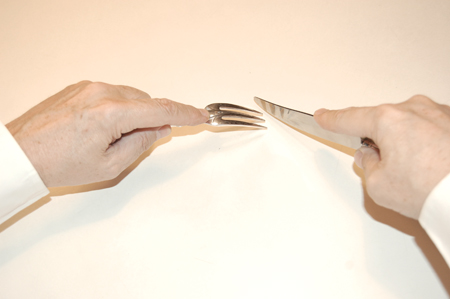 Figure 5: Holding the fork when also using a knife.
Figure 5: Holding the fork when also using a knife.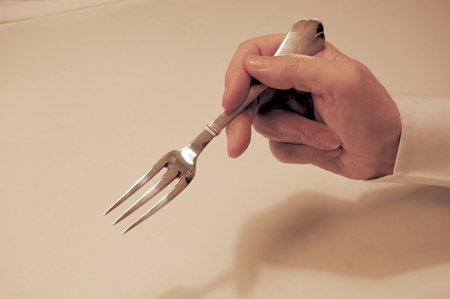 Figure 6: Holding the fork when used by itself.
Figure 6: Holding the fork when used by itself. Figure 7: Cutting and eating with a fork and knife.
Figure 7: Cutting and eating with a fork and knife. Figure 8: Eating with a fork while the knife is resting on the plate.
Figure 8: Eating with a fork while the knife is resting on the plate.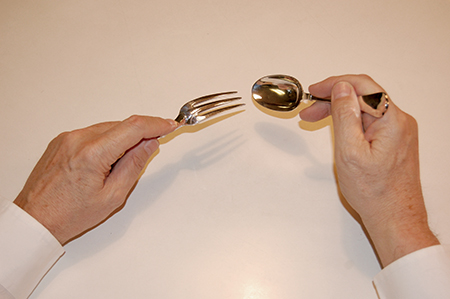 Figure 9: Eating with a dessert fork and spoon.
Figure 9: Eating with a dessert fork and spoon. Figure 10: Placement of fork and knife when finished eating (same as dessert fork and spoon).
Figure 10: Placement of fork and knife when finished eating (same as dessert fork and spoon).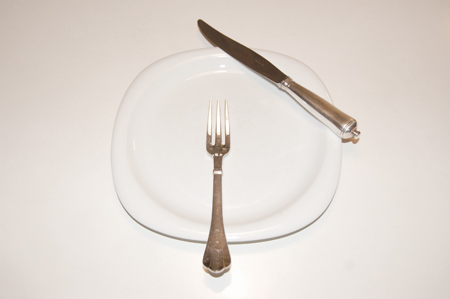 Figure 11: Placement of fork and knife when pausing while eating (same as dessert fork and spoon).
Figure 11: Placement of fork and knife when pausing while eating (same as dessert fork and spoon). Figure 12: Buttering bread on a bread plate.
Figure 12: Buttering bread on a bread plate.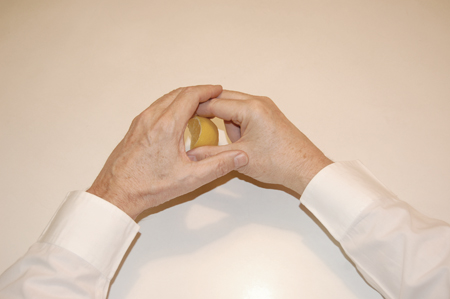 Figure 13: Squeezing a lemon.
Figure 13: Squeezing a lemon.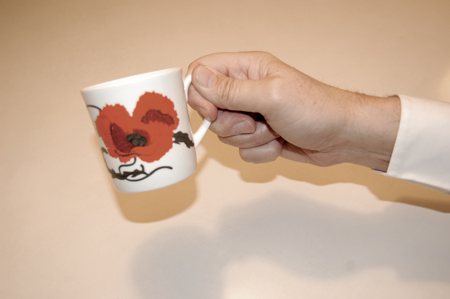 Figure 14: The correct way to hold a cup.
Figure 14: The correct way to hold a cup.
